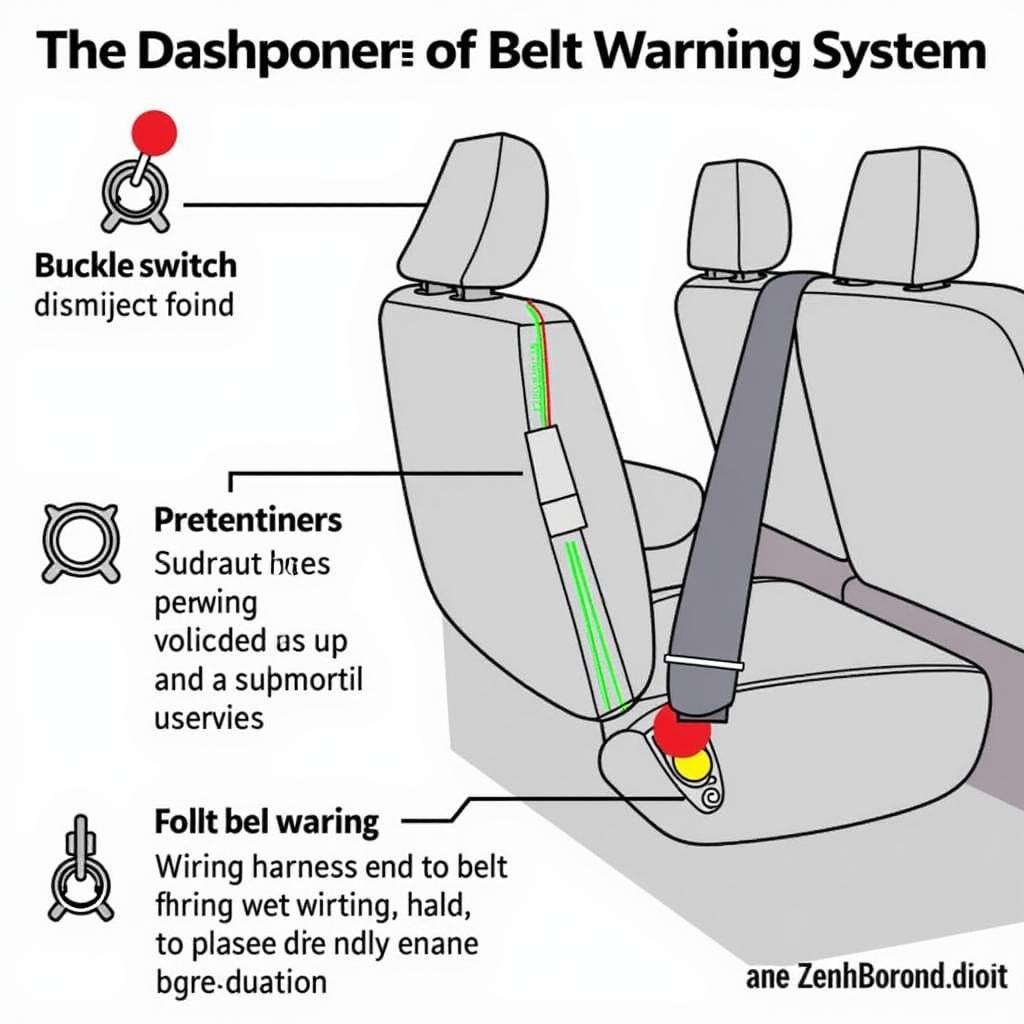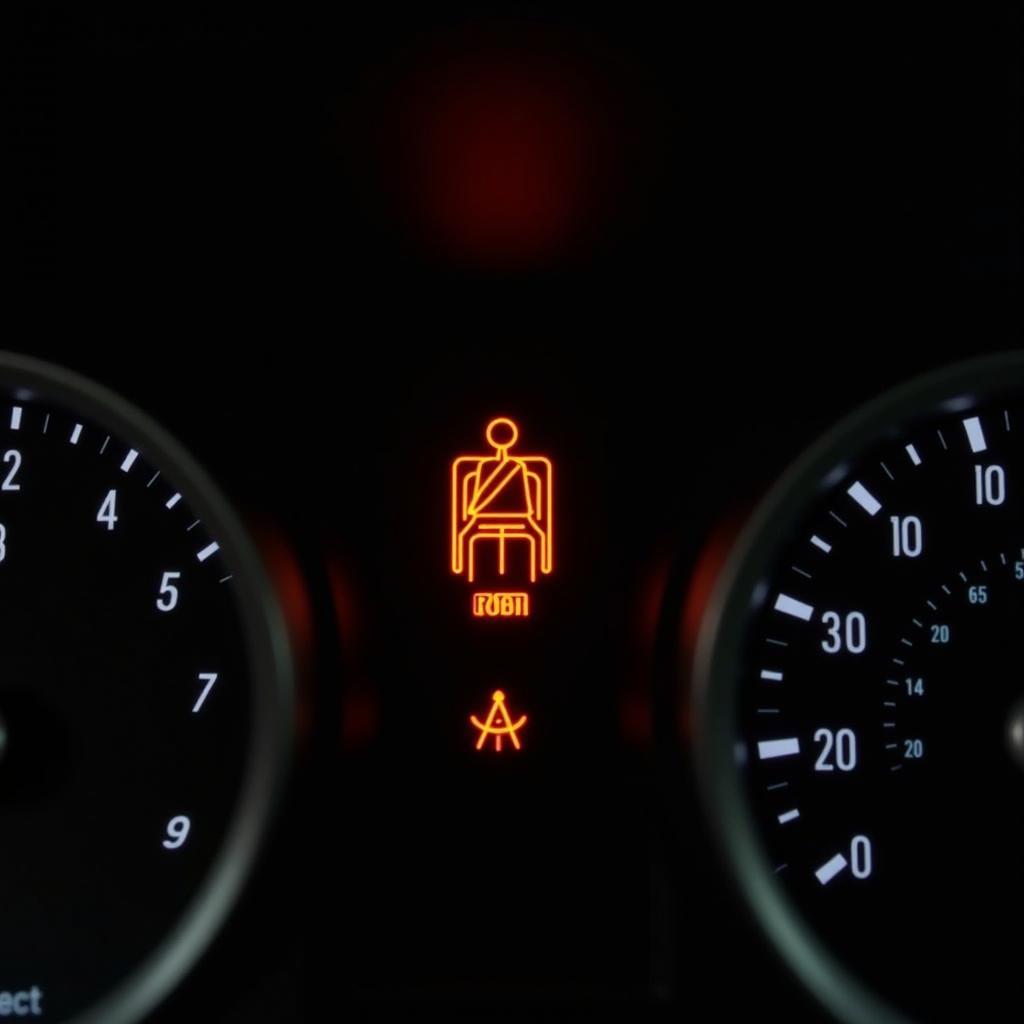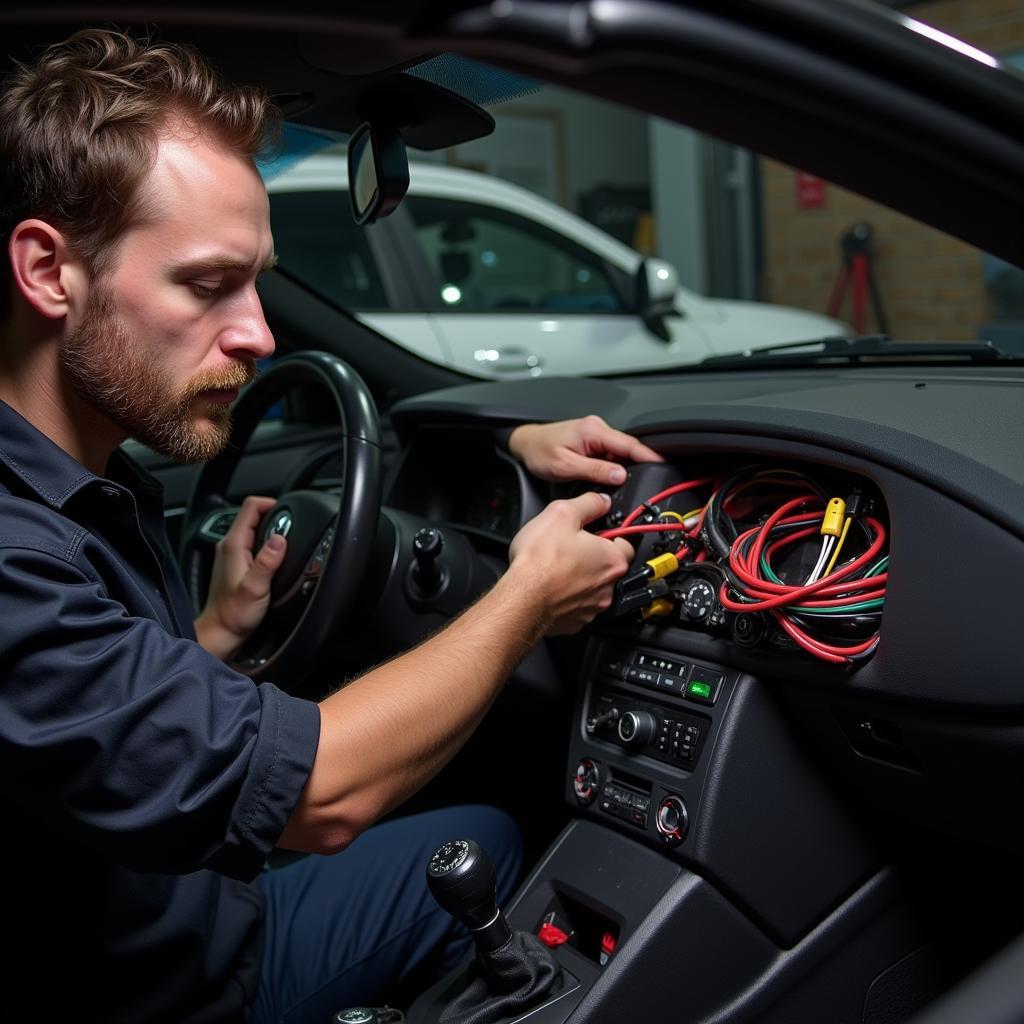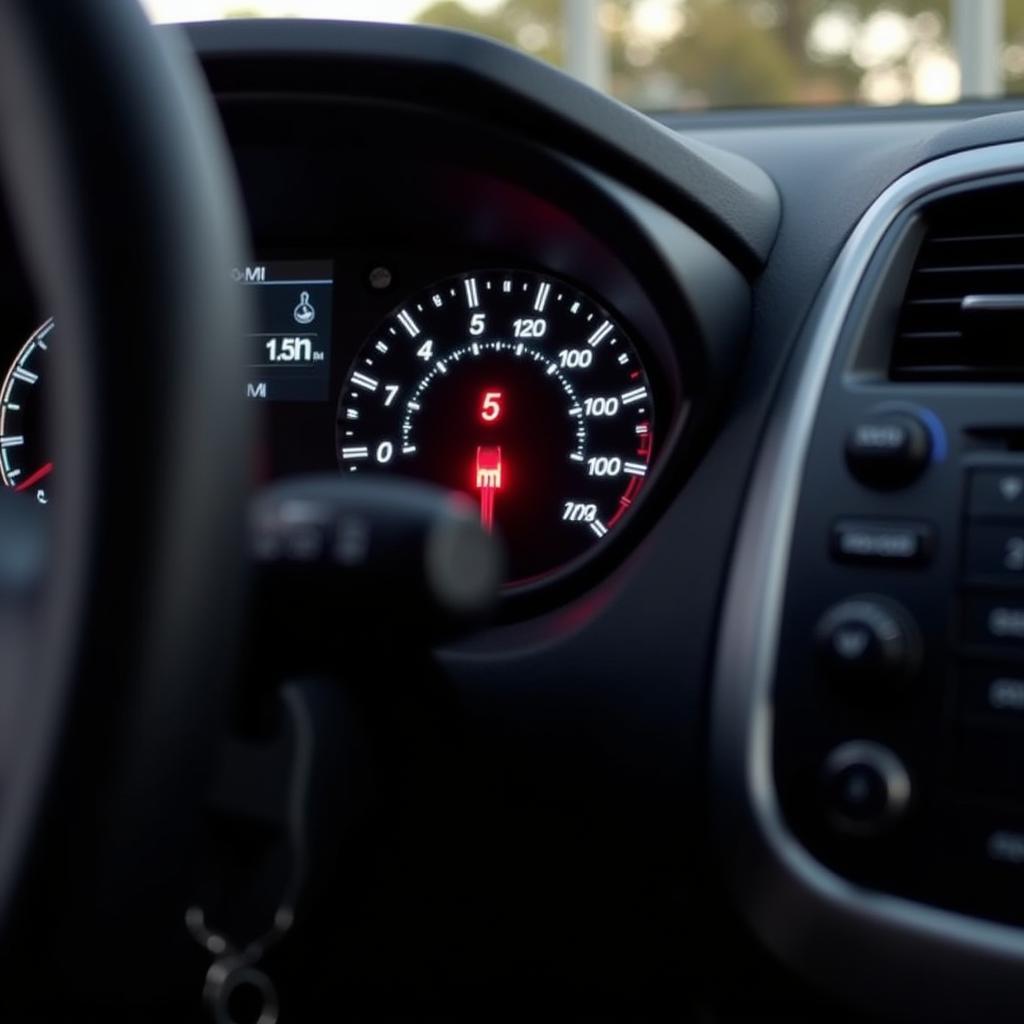A malfunctioning seat belt warning system is not just an inconvenience, it’s a safety hazard. Ignoring this issue puts you and your passengers at risk in the event of an accident. This comprehensive guide explores the common causes of a “seat belt warning not working” issue and provides practical solutions to get your warning system back in working order.
Understanding Your Seat Belt Warning System
Before we dive into troubleshooting, it’s helpful to understand how your car “knows” when your seat belt is fastened and how it alerts you if it isn’t.
The system primarily consists of:
- Seat Belt Buckle Switch: This sensor, located in the buckle mechanism, detects when the seat belt is latched.
- Seat Belt Pretensioners: These devices automatically tighten the seat belt in a crash. Many vehicles use these to also sense if a seat is occupied, and if so, whether the belt is buckled.
- Warning Light and Chime: The dashboard warning light (usually a red icon of a person with an unfastened seat belt) illuminates, and a chime may sound when the ignition is on and the driver’s seat belt is unbuckled.
 Car Seat Belt System Components
Car Seat Belt System Components
Why is My Seat Belt Warning Not Working?
Several factors can cause your seat belt warning system to malfunction. Here are some of the most common culprits:
1. Faulty Seat Belt Buckle Switch
The buckle switch is the most likely cause of a seat belt warning malfunction. If the switch is damaged or worn out, it may not detect when the buckle is fastened, preventing the system from disengaging the warning.
2. Seat Belt Pretensioner Issues
A malfunctioning seat belt pretensioner can also disrupt the warning system, especially in vehicles where it plays a role in occupancy detection. Issues could arise from a faulty sensor within the pretensioner or problems with the wiring harness connecting it to the system.
3. Wiring Problems
Loose connections, corrosion, or damage to the wiring harness connecting the seat belt components to the car’s electrical system can interrupt communication, leading to a non-functional warning system.
4. Malfunctioning Warning Light or Chime
While less common, it’s possible for the warning light in your dashboard or the chime mechanism itself to fail. This would prevent you from receiving the alert even if the rest of the system is working correctly.
 Car Dashboard with Illuminated Seatbelt Warning Light
Car Dashboard with Illuminated Seatbelt Warning Light
5. Software Glitches
Modern cars rely heavily on software, and occasionally, glitches can occur. A software malfunction in the airbag control module (which often manages the seat belt warning system) could potentially disrupt its operation.
How to Fix a Seat Belt Warning Not Working
The repair method for your seat belt warning system will depend on the root cause of the problem. Here are some potential solutions:
1. Inspect the Seat Belt Buckle: Begin by visually examining the buckle for any visible damage or debris. Ensure the buckle latches securely. If you notice any issues, the buckle may need to be cleaned or replaced.
2. Check the Wiring: Carefully inspect the wiring harness connected to the buckle switch and pretensioners for any loose connections, corrosion, or damage. Re-secure any loose connections and repair or replace damaged wiring as needed.
3. Test the Seat Belt Buckle Switch: You can test the buckle switch using a multimeter to check for continuity. If the switch fails the test, it will need to be replaced.
Expert Insight from David Miller, Automotive Electrician: “Always disconnect the battery’s negative terminal before working on any electrical components, including the seat belt system. This will help prevent accidental short circuits and potential damage to the car’s electrical system.”
4. Inspect the Pretensioners: Visually inspect the pretensioners for any signs of damage. If you suspect an issue, consult a qualified mechanic or an automotive electrician for further diagnosis and repair.
5. Diagnose Warning Light and Chime Issues: If you suspect the warning light or chime is faulty, you can check the bulb (for the light) or the chime unit. Replacements are usually straightforward.
 Mechanic Inspecting Car Wiring Harness Under Dashboard
Mechanic Inspecting Car Wiring Harness Under Dashboard
6. Software Update or Reset: If you suspect a software glitch, a software update or reset at a dealership or qualified repair shop might be necessary.
When to Seek Professional Help
While some seat belt warning system issues are simple enough to diagnose and repair at home, others require specialized knowledge and equipment. If you’re uncomfortable working with electrical components or if your initial troubleshooting doesn’t resolve the problem, it’s always best to consult a qualified mechanic or an automotive electrician. They have the expertise and tools to accurately diagnose the issue and perform the necessary repairs safely and effectively.
Seat Belt Warning Not Working: Specific Car Models
If you’re experiencing a seat belt warning malfunction on a specific car model, you may find additional information and troubleshooting tips tailored to your vehicle. Here are some resources for common car models:
- Audi A4 Seat Belt Warning Not Working
- H2 Hummer Seat Belt Warning Not Working
- H2 Hummer Seat Belts Warning Not Working
Seat Belt Warning Light Not Working: A Final Word
A malfunctioning seat belt warning system is a serious safety concern that should never be ignored. By understanding the system and following the troubleshooting steps outlined above, you can increase your chances of identifying and fixing the problem. However, always prioritize safety and consult a professional if you’re unsure about any aspect of the repair process. Remember, a properly functioning seat belt warning system is crucial for the safety of you and your passengers.

